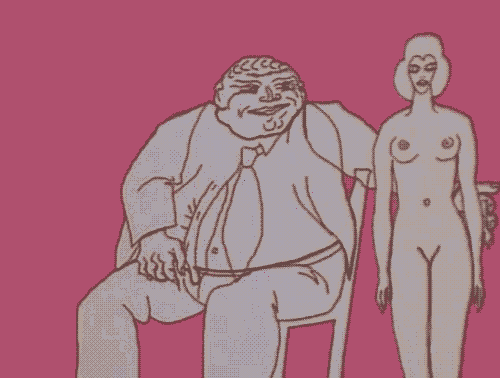Oddball Films Media
•
Jun 21, 2015
Incredible Machine (Color, 1968)
The crew from Bell Laboratories demonstrates novel uses of the computer in audio-visual communication research: computer generated graphics; computer-assisted design of an electronic circuit drawn with a light-pen on a cathode-ray tube; simulation of human speech and singing; and composition of music and of abstract or figurative color pictures and animation films.
Experiments in Motion Graphics (Color, 1968, John Whitney)
One of the pioneers of computer graphics and filmmaking, John Whitney, muses on the graphic and art making potential of the computer. The film treats the viewer to some of the earliest computer motion graphics committed to film, while Whitney explains his methods and philosophy of his art.
One of the pioneers of computer graphics and filmmaking, John Whitney, muses on the graphic and art making potential of the computer. The film treats the viewer to some of the earliest computer motion graphics committed to film, while Whitney explains his methods and philosophy of his art.
Arabesque (Color, 1975, John Whitney)
Early abstract computer-generated film by pioneer John Whitney- shimmering lines and waves of oscillating color dance to the music of Eastern rhythms and evolve from randomness to patterns inspired by 8th century Persian designs. Inspired by his 1974 visit to the city of Isfahan in Iran, Whitney found a relation between the formal and visual tradition of Islamic art and architecture and his own computer graphic study.
Early abstract computer-generated film by pioneer John Whitney- shimmering lines and waves of oscillating color dance to the music of Eastern rhythms and evolve from randomness to patterns inspired by 8th century Persian designs. Inspired by his 1974 visit to the city of Isfahan in Iran, Whitney found a relation between the formal and visual tradition of Islamic art and architecture and his own computer graphic study.
Whitney famously collaborated with Saul Bass on the title sequence to Hitchcock’s Vertigo.
Lux@ Jr. (Color, 1986)
Lux@ Jr. (Color, 1986)
Catalog (Color, 1961, John Whitney)
Famed cinematic innovator John Whitney's demo reel of work created with his analog computer/film/camera machine he built from a WWII anti-aircraft gun sight. Whitney and the techniques he developed with this machine were what inspired special FX wizard Douglas Trumbull) to use the slit scan technique on 2001: A Space Odyssey. An eye-opening and inspiring work of early computer generated imagery.
Lapis (Color, 1963–1966, James Whitney)
James Whitney’s Lapis (1966) is a classic work of abstract cinema, a 10-minute animation created with primitive computer equipment over a three-year period. In this piece, the smaller circles oscillating in and out in an array of colors resemble a kaleidoscope and are accompanied by Indian sitar music. The patterns gradually have a hypnotic, trance-inducing effect. The auditory and visual senses clearly correlate in this work and deliver a wonderful example of the phenomenon of synaesthesia.
James Whitney is regarded as one of the great masters of visual music and he and his brother John (see Arabesque above) were pioneers in the use of computer technology in cinema.
Binary Bit Patterns (Color, 1969, Michael Whitney)
In the early 1960s digital computers became available to selected artists for the first time. The output medium was usually a pen plotter, microfilm plotter line printer or an alphanumeric printout, which was then manually transferred into a visual medium. Computers were expensive-from $100,000 to several millions of dollars. It took a high degree of technical expertise and a fundamental understanding of systems to create art.
Decades before digital imaging became a part of our everyday lives, the Whitney brothers were exploring the potential of creating moving images using computers and interrogating the emerging relationship between artist and computer.
This seldom-seen film, programmed on a computer and then optically printed explores the graphic permutations of a Persian pattern. The spectacular, fast-paced film features quilt like tapestries of polyhedral and crystalline figures pulsating and multiplying with a kind of universal logic eliciting a hypnotic, trancelike effect from the viewer. This film echoes a preoccupation with the mandala image and the interest in Eastern meditative philosophy that is seen in the work of the whole Whitney family.
Image

At an extremely rapid pace, images dissolve, move, morph and/or reappear into things or objects that become more and more exaggerated and absurd in this witty and disturbing cartoon by Hungarian director Peter Foldes. One of the first computer-generated films, this Jury Prize winner at the Cannes Film Festival and Academy Award Nominee is a satire focusing on the self-indulgence that plagues our ‘hungry’ world, and depicts a man as he continues to eat, and eat, and eat!
Both Sides Now (Color, 1972, John Wilson)
Pioneering computer animation from John Wilson, whose career started in the late 1940’s (winning Oscars for Gerald McBoing-Boing and Toot, Whistle, Plunk, Boom). This short was the first computer generated music film and was produced for and aired on the Sonny and Cher TV show. The song is Both Sides Now by the great Canadian chanteuse Joni Mitchell.
Pioneering computer animation from John Wilson, whose career started in the late 1940’s (winning Oscars for Gerald McBoing-Boing and Toot, Whistle, Plunk, Boom). This short was the first computer generated music film and was produced for and aired on the Sonny and Cher TV show. The song is Both Sides Now by the great Canadian chanteuse Joni Mitchell.
Tomato Bushy Stunt Virus (Color, 1981)
This computer-generated study of a common farming pest took on a bizzare, Tron-like supernatural beauty in the hands of leading scientists of the day.


